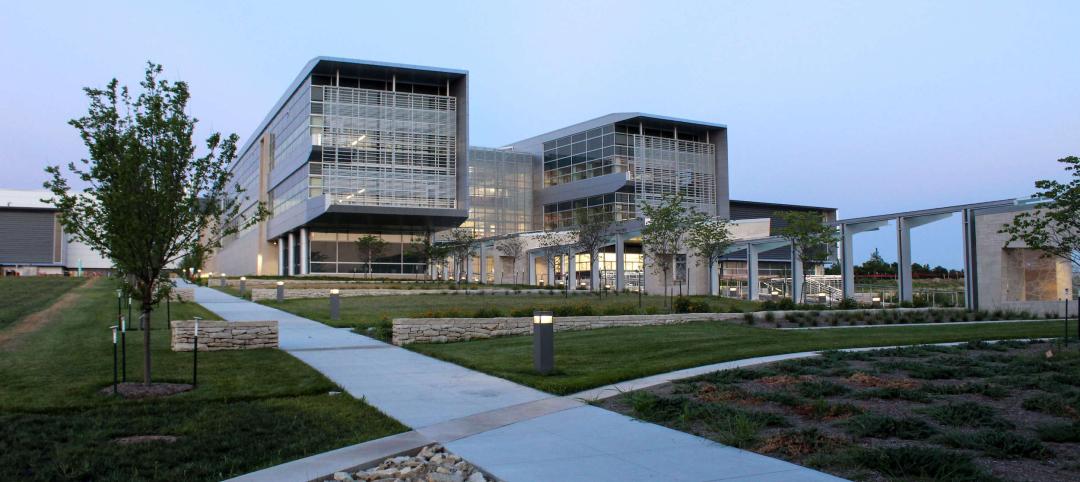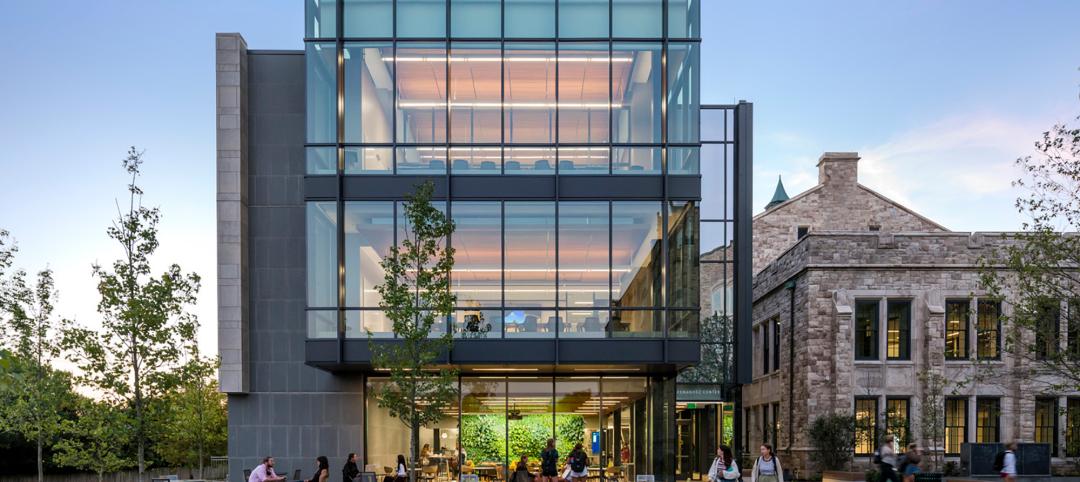Representatives from the architectural regulatory authorities of United States, Canada, and Mexico have announced a major agreement to mutually recognize architect credentials in the three countries, making it possible for architects to work across North American borders.
The National Council of Architectural Registration Boards (NCARB) in the United States, in conjunction with the Canadian Architectural Licensing Authorities (CALA) and the Federacion de Colegios de Arquitectos de la Republica Mexicana (FCARM), announced the final implementation of the Tri-National Mutual Recognition Agreement for the International Practice of Architecture among the United States, Canada, and Mexico.
The agreement represents over a decade of negotiations, bringing cross-border recognition of professional credentials from concept to reality in the spirit of the North American Free Trade Agreement (NAFTA). Qualified architects, from each country, who satisfy the requirements of the agreement, will be granted a credential that will lead to a license to practice architecture in the host country.
Informally known as the Tri-National Agreement, the pact outlines specific requirements that architects must satisfy when pursuing mutual recognition. These include education and work qualifications, as well as submitting documentation to confirm the individual’s credentials. A few of the basic eligibility requirements include:
• Completion of a professional degree in architecture from a program accredited by the National Architectural Accrediting Board (NAAB), the Canadian Architectural Certification Board (CACB/CCCA), Acreditadora Nacional de Programas de Arquitectura y Disciplinas del Espacio Habitable (ANPADEH), or recognized equivalent.
• A minimum of 10 years of post-licensure experience in the architect’s home jurisdiction.
• Proof of “Good Standing” in the home jurisdiction, as verified by the local regulatory authority.
• Knowledge of the codes, laws, and other matters applicable to the practice of architecture in the host country.
• Submission of a dossier of work to satisfy the specific competencies outlined in the agreement related to “responsible control and comprehensive practice.”
• Completion of an interview before a review panel in the host country, conducted in the language of the host country.
The agreement, along with similar programs, opens doors to qualified architects as the world and architectural practices become more globally connected. Architects interested in pursuing the opportunity for licensure outside of their home country should review the eligibility requirements and program information in greater detail as posted on the NCARB website. Additional details and standard application forms can be obtained by contacting the regulatory authority in the architect’s home country.
The path to the Tri-National Agreement has its origins in the passage of NAFTA in 1994, which spurred a discussion between leaders and regulators of the architecture profession in the United State, Canada, and Mexico to consider ways to facilitate the mutual recognition of licensure credentials among all three countries.
The initial agreement, signed in 2005 by the leaders of the profession in all three countries, marked what many considered to be one of the first professional services recognition programs under NAFTA. The study of the path to licensure in each country, the subsequent negotiations, the pilot program, and the final mechanisms for implementation continued over the following years, with support from volunteer leaders and staff from all three countries’ licensing authorities.
Throughout the process, the underlying goal has been to remove barriers and provide qualified architects the opportunity to offer professional services across borders while ensuring the protection of the public health, safety, and welfare. The agreement applies to architects from the United States, Canada, or Mexico who have not used other mutual recognition agreements for initial licensure in their home country.
Related Stories
Laboratories | Jul 10, 2023
U.S. Department of Agriculture opens nation’s first biosafety level 4 containment facility for animal disease research
Replacing a seven-decade-old animal disease center, the National Bio and Agro-Defense Facility includes the nation’s first facility with biosafety containment capable of housing large livestock.
Adaptive Reuse | Jul 6, 2023
The responsibility of adapting historic university buildings
Shepley Bulfinch's David Whitehill, AIA, believes the adaptive reuse of historic university buildings is not a matter of sentimentality but of practicality, progress, and preservation.
Market Data | Jul 5, 2023
Nonresidential construction spending decreased in May, its first drop in nearly a year
National nonresidential construction spending decreased 0.2% in May, according to an Associated Builders and Contractors analysis of data published today by the U.S. Census Bureau. On a seasonally adjusted annualized basis, nonresidential spending totaled $1.06 trillion.
Architects | Jul 5, 2023
Niles Bolton Associates promotes Jeffrey Smith, AIA, to President and C. Cannon Reynolds, AIA, to Managing Director
Niles Bolton Associates (NBA), a leading architecture, planning and design firm, announces leadership changes as a part of its ongoing commitment to future growth. Current Executive Vice President, Jeffrey Smith, AIA, has been named President and C. Cannon Reynolds, AIA, has been named Managing Director effective June 30, 2023.
Mixed-Use | Jun 29, 2023
Massive work-live-play development opens in LA's new Cumulus District
VOX at Cumulus, a 14-acre work-live-play development in Los Angeles, offers 910 housing units and 100,000 sf of retail space anchored by a Whole Foods outlet. VOX, one of the largest mixed-use communities to open in the Los Angeles area, features apartments and townhomes with more than one dozen floorplans.
Office Buildings | Jun 28, 2023
When office-to-residential conversion works
The cost and design challenges involved with office-to-residential conversions can be daunting; designers need to devise creative uses to fully utilize the space.
Architects | Jun 28, 2023
CSHQA hires first CEO in company's 134-year history
The Board of Directors of CSHQA announced the appointment of Ryan D. Martin, AIA NCARB as Chief Executive Officer.
Multifamily Housing | Jun 28, 2023
Sutton Tower, an 80-story multifamily development, completes construction in Manhattan’s Midtown East
In Manhattan’s Midtown East, the construction of Sutton Tower, an 80-story residential building, has been completed. Located in the Sutton Place neighborhood, the tower offers 120 for-sale residences, with the first move-ins scheduled for this summer. The project was designed by Thomas Juul-Hansen and developed by Gamma Real Estate and JVP Management. Lendlease, the general contractor, started construction in 2018.
Architects | Jun 27, 2023
Why architects need to think like developers, with JZA Architecture's Jeff Zbikowski
Jeff Zbikowski, Principal and Founder of Los Angeles-based JZA Architecture, discusses the benefits of having a developer’s mindset when working with clients, and why architecture firms lose out when they don’t have a thorough understanding of real estate regulations and challenges.
Apartments | Jun 27, 2023
Average U.S. apartment rent reached all-time high in May, at $1,716
Multifamily rents continued to increase through the first half of 2023, despite challenges for the sector and continuing economic uncertainty. But job growth has remained robust and new households keep forming, creating apartment demand and ongoing rent growth. The average U.S. apartment rent reached an all-time high of $1,716 in May.

















